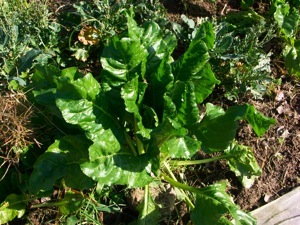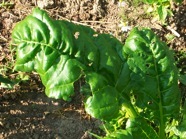
Su-Sw
SUNFLOWER
Sunflower (helianthus annuus) pits are used everywhere: in bread, hot dishes, just as a nibble, oil is pressed out of them. And if you don’t want to sacrifice the time for harvesting the pits, justleave the flowerheads on an nice little spot in the garden, birds just love them, you’ll be amazed how quickly they eat the whole lot.
Sunflowers come in all sorts of sizes, the big flowers can be over 30 cm wide, or under 10. They have all sorts of yellow colours possible, and even some red and red-brown ones.
A lesser grown one is helianthus maximiliana, with lots of little flowerheads and edible tubers.
Give all these plants a place in the sun, and a good support for the big ones, they like a bit of rain too, but especially warmth is essential for their growth.
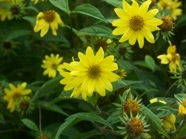
SWEET CICELY
This is another one in the category: once you have it, how to get rid of it... But it’s not annoying, nor very weedy. Sweet cicely (myrrhis odorata) has a wonderful chervil-anise -fennel taste, the leaves are a fine addition to all sorts of salads, and can be used for hot dishes as well, but add them after boiling or frying, otherwise they’ll lose their taste.
Seeds need to be fresh and stratified in order to get good results, once you have an established plant, you’ll soon discover the young seedlings the next spring. The plants have a very deep going root (edible as well) , every time I try to dig it, I always break the root, and the remaining part resprout again, even if it’s 20 cms under the earth...
I never can resist chewing the very young green seeds in early summer, they have such a wonderful taste, and these can also be added to just about everything.
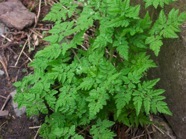
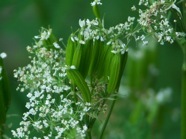
SWEET POTATO
At first I had some doubts about placing this here, because it’s a hard one to grow out, but, after all, it’s a bit my stubborness to try and grow this outside that makes it so hard. It thrives perfectly in a greenhouse, making long decorative vines and plants, with nice flowers and , off course, the wonderful edible tubers.
If you obtain some tubers, DON’T plant them like potatoes or other tubers. They have a different growing habit!! The potatoes should be pre-sprouted, and after that cuttings should be taken. These cuttings root up very easily, ideally they are about 20 cms or more long. The cuttings should be placed on a warm spot, sunny, they have no problem with lots of water. With the right conditions you should be able to harvest some tubers after summer. These tubers are best cured under high temperatures, this will improve their taste.
An amzing array of varieties exist, from the familiar pale yellow ones, to purple, red, and so on.
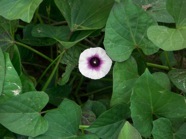
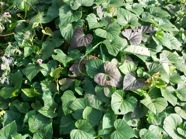
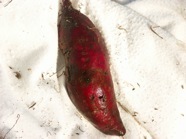
SWEETLEAF
Also known as stevia, I have a bit of doubts about the common name here: stevia rebaudiana is known as sugarleaf and sweetleaf, while sweeltleaf is also used for the less common stevia serrata. Off course, stevia is known for the use of the leaves, which are amazingly sweet, licorice-taste included. A great tea can be made out of it, and the leaves can be used everywhere sugar is used. The plants are staightforward to grow, although they will perform better when its warm. Harvest the leaves whenever it’s necessary. Stevia is mainly reproduced by cuttings.
Sweetleaf is a bit controversial, some say it has some bad effects on humans. Others (including myself) say it’s perfectly harmless, and even better than the sugar derived mainly from sugarbeets. And this sugarbeet industry tries to forbid the growth of stevia, which is an amazingly sad thing, you just cannot forbid these things to be grown...

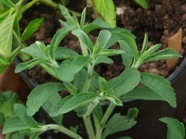
SWISS CHARD
If you want to grow out some colourful leaves in the garden, these are the ones you should go for: rhubarb chard, rainbow chard, ruby red,...the names alone give you a hint of what they look like. Yellow, light-green, dark-green, red, brownish,....
Mostly the leaves are used as a good spinach alternative during summer (it doesn’t bolt) and the winter is mild, it will produce leaves until spring. What is lesser-known is that the best part is the thick beet itself, a very flavourful sweet-tasting bulb, that can grow quite big, so this is certainly a multi-purpose crop.

